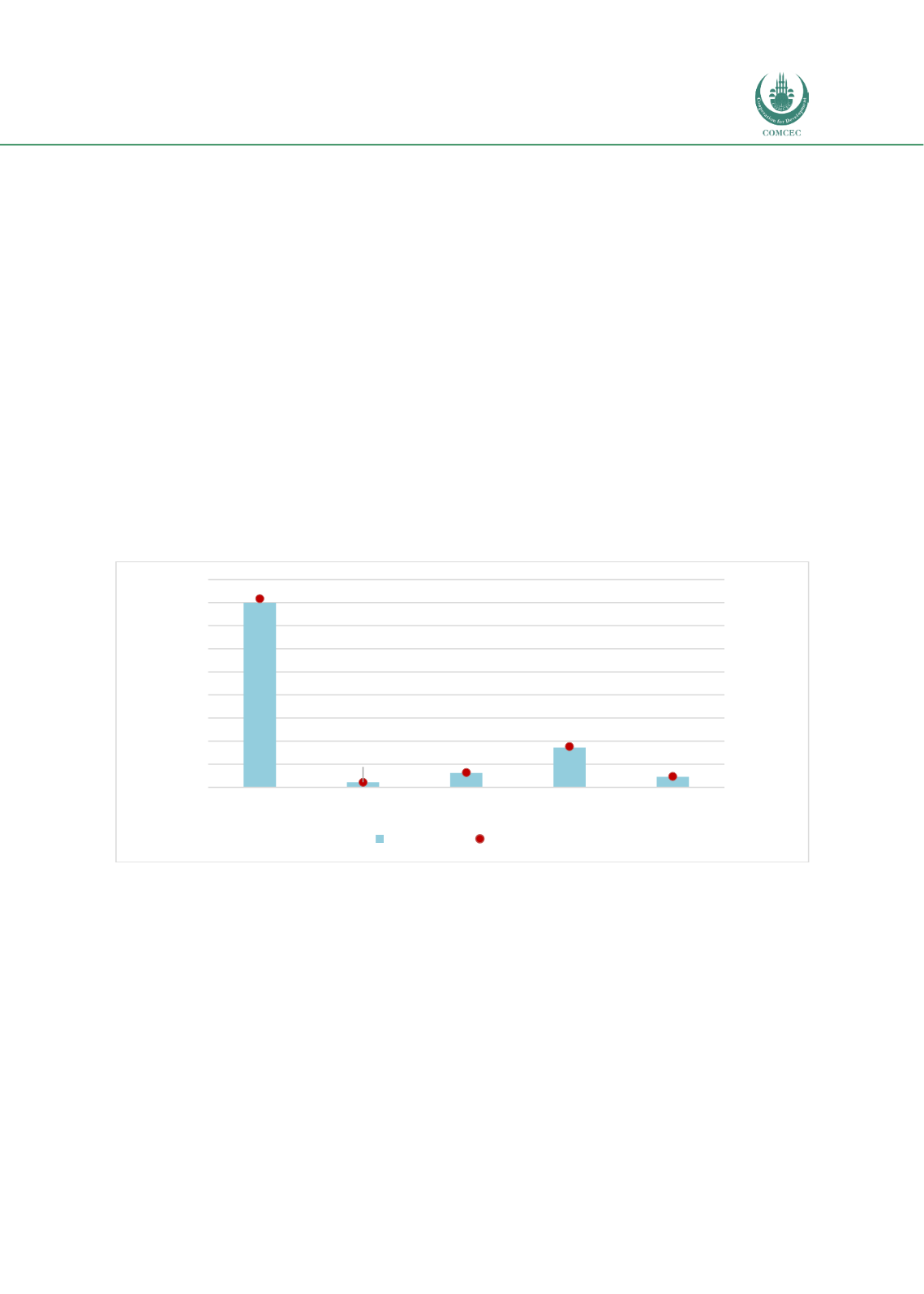

Infrastructure Financing through Islamic
Finance in the Islamic Countries
55
capitalization of domestic companies for low income countries, the figure for OIC countries is
45.1% of the GDP, which is the lowest relative to other country groupings. It should also be
noted that the market capitalization of the OIC countries represents the average of 18
countries only, with no data available for the remaining countries. The relative size of the
banking sector and non-bank financial institutions of OIC countries is represented by the credit
provided to the private sector by these sectors. Overall the banking sector is larger than the
nonbank financial institutions sector in OIC countries with the credit to the private sector
provided being 38.3% and 17.7% of the GDP respectively. While the sizes of the banks and
non-bank financial institutions for OIC countries are better than the averages for low income
countries (21.0% and 6.0% of the GDP respectively), they are lower than all other income
groupings.
The global size of the different sectors of the Islamic financial industry is shown in Chart 3.9.
With a total value of USD 2.202 trillion of the Islamic finance assets in 2016, the Islamic
banking sector dominates the industry, constituting 72.6% of the total followed by the sukuk
valued at 15.7% of Islamic financial assets. Other Islamic financial institutions (IFIs) that
include investment banks, leasing companies, etc. have assets worth USD 124.4 billion with
Islamic fund assets being valued at USD 91.2 billion.
Chart 3.9: Islamic Financial Sectors Size (2016) (USD billion)
Source: ICD & TR (2017)
3.5.
Islamic Banking Sector and Infrastructure Financing
The distribution of 494 Islamic banks across different regions is shown in Chart 3.10. While the
MENA region excluding the GCC has the largest number of banks, holding USD 511 billion in
assets, 101 banks in the GCC region have assets valued at USD 795.7 billion. Southeast Asia has
81 Islamic banks holding USD 200.2 billion in assets followed by 65 Islamic banks in South
Asia with assets worth USD 47 billion.
The scope of using banks to finance infrastructure projects increases the larger the bank is.
The data shows that the average assets of an Islamic bank are valued at USD 3.24 billion which
is relatively small. As indicated, financial institutions can invest in infrastructure projects
either by direct financing or buying project securities issued by the Project Company. Given the
1598.9
42.5
124.4
344.8
91.2
72.6%
1.9%
5.7%
15.7%
4.1%
0%
10%
20%
30%
40%
50%
60%
70%
80%
0
200
400
600
800
1,000
1,200
1,400
1,600
1,800
Islamic banking
Takaful
Other IFIs
Sukuk
Islamic funds
Percentage of total
USD (Billion)
US$ (Billion)
Percentage
















